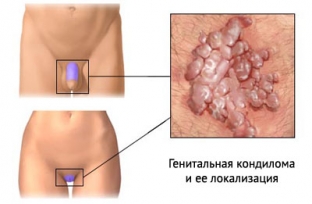More than 100 types of human papillomavirus are known to medicine. This virus lives in the blood for life and causes absolutely no symptoms. However, there is evidence of self-healing from HPV. People have always been worried about small warts, papillomas and growths on any part of the skin. It is not surprising, because the papillomavirus can provoke cancer. But not all strains of the virus are so dangerous.
Which growths on the skin are not dangerous and will go away on their own, and which ones need to be urgently treated? What are warts? What are the features of the treatment of warts in children? Read all the answers to the questions in our article.
Papillomavirus is sexually transmitted. Infection is carried out from 2-3 sexual partners. Infection with the virus is facilitated by injuries and microcracks of the mucous membrane and skin.
Human papillomavirus is divided into "low risk" viruses that cause genital warts and "high risk" viruses that cause cervical dysplasia, cervical and anus cancer. The penis and vulva may also be affected.
Infection occurs around age 30 and is asymptomatic. If a pregnant woman has clinical manifestations of PVI, the child can become infected from the mother during childbirth.
Clinical manifestations of human papillomavirus infection

- Genital warts appear several months after infection. There are several types of genital warts:
- Typical warts - affect the mucous membranes and areas of the skin with high humidity – anus, vaginal vestibule, inner part of the foreskin. Often this lesion looks like a cauliflower.
- Hyperkeratotic condyloma – characterized by a surface covered with a horny layer. Condyloma grows on the keratinized epithelium of the labia majora and foreskin.
- Papular warts, unlike others, have a smooth surface, because they are devoid of horny layers.
- Plant warts appear on the skin in the form of spots. They do not rise above the surface of the skin. These condylomas may not be noticed on the skin.
In medicine, Buschke-Levenshtein giant condylomas (HPV 16, 18) are also described. Their typical location is on the uterus in women, on the penis, inguinal region in men. Also, its frequent localization is around the anus. Condylomas in diameter reach a significant size, which elevates them above the level of the skin. On the surface of the genital warts there are outgrowths, vegetations and grooves, from which a sticky secret is released. They resemble areas of hyperkeratosis.
- Common Warts – hemispherical nodules that have a dense texture, painless, reach 0.5 cm in diameter. As a rule, there are a lot of them on the body. Color of warts – gray-yellow or grayish-pink. On the surface, they are covered with outgrowths with hyperkeratosis and are rough to the touch. Such warts are more often localized on the back of the hands and feet, and they may also appear on other parts of the body.
- Palmar and plantar warts appear more often than ordinary ones. Allocate hyperkeratotic form and superficial mosaic. In the first case, growths with depressions are observed. They are painful on palpation. In the 2nd case no subjective disorders are observed, hyperkeratosis is more common in the area of the forefoot.
- Flat warts are dense, small, multiple nodules that have the color of normal skin and a smooth surface.
Features of the course of PVI in children
- Viral infection occurs more often in childhood.
- Flat juvenile warts occur only in children and adolescents. Their characteristic feature is self-healing by the age of 14-16.
- The characteristic manifestations of PVI in children are flat, common and plantar warts.
- In children, the appearance of warts (vulgar or plantar) is provoked by injuries in the elbows and knees, as well as wearing hard, uncomfortable shoes (sneakers, roller skates, skates).
The disease is differentiated from secondary syphilis (warts, papules of the palms and soles).
Human papillomavirus treatment
HPV usually has no clinical signs or symptoms, so treatment is not required. After all, a great opportunity for spontaneous regression. This conclusion does not apply to genital warts because their removal may reduce the risk of infection of sexual partners and the development of cancer.
HPV treatment methods
- Destruction by physical method - cryodestruction with liquid nitrogen, Cryopharm stick, laser destruction, curettage, electrocoagulation.
- Chemical destruction - Solcoderm solution, treatment of the affected skin with 80-90% trichloroacetic and dichloroacetic acid, Solcoderm solution, Ferezol. Effective verrukacid and 20% solution of silver nitrate.
- Cytotoxic drugs - podophyllotoxin, podophyllin, retinoic acid or tretinoin, fluorouracil creams.
- The keratolytic treatment method is represented by varnishes and plasters with 40% salicylic acid.
- Antiviral preparations are bromnaphthoquinone ointments, oxolin ointment, cream with 5% imiquimod.
After treatment, relapses are possible in 60-80% of patients. Asymptomatic infection does not require treatment.
After removal of genital warts, ulcerative processes on the skin are possible. In such cases, it is recommended that patients prescribe ellagochitis, which prevents scar formation and has an anti-inflammatory effect. After that, it is advisable to prescribe inosine pranobex, which is an immunostimulant and has an antiviral effect. If the patient has high-risk HPV, indinol may be justified.
In any case, any patient requires an individual approach. And people should know that you should not be afraid of warts and you cannot remove them on your own. The harm that can be done with self-treatment can be great. But if genital warts have grown on the body, a visit to a specialist cannot be postponed.
Parents of teenagers need to have conversations with their children. After all, condoms can protect their children from such infections. We need to educate children about intimate and personal hygiene.
Compliance with the rules of personal hygiene and safe sex, as well as timely treatment of inflammatory and degenerative diseases of the genitourinary system can reduce the risk of infection with the human papillomavirus. Take care of your health!







Add a comment